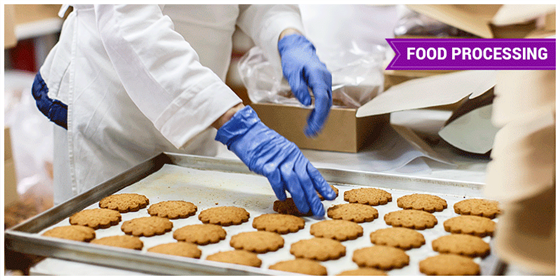“Food processing is the transformation of agricultural products into food, or one form of food into other forms.”

What is Food processing?
Food Processing is the process of transforming food items into a form that can be used. It can cover the processing of raw materials into food via different physical and chemical processes. Various activities covered in this process are mincing, cooking, canning, liquefaction, pickling, macerating and emulsification.
It takes clean, harvested crops, or butchered and slaughtered animal products to produce attractive, marketable, and in several cases, life-long food products. However, food processing can also lower the nutritional value of the food and might include additives that might adversely affect health.
Objectives of Food Processing
Food technology is a very vast domain concerning with the production and processing of food. Food processing has certain objectives, such as:
- It boosts the shelf life of food products.
- Prevent food-contamination.
- Food storage and Transportation.
- Turns raw food materials into attractive, marketable products.
- Provide employment to a large population.
Also Read: Food Adulteration
Food processing Methods
There are certain criteria that have to be compiled for the appropriate processing of food, right from the possibility of a pest or bacteria to invade and multiply on foods to the biological activity of foods. The following methods are applied for the proper processing of food:
- Peeling off the outer layers of the raw materials.
- Chopping or slicing
- Mincing
- Liquefaction
- Fermentation
- Emulsification
- Cooking
- Mixing
- Gasification such as the addition of a gas in bread or soft drinks.
- Proofing
- Spray drying
- Pasteurization
- Packaging
Other Methods of Food Processing
Food preservation is a process involved in food processing employed to prevent the growth of fungi, bacteria, and many other microorganisms. It involves the process of slowing down the oxidation of fats that would lead to rancidity. There are several food preservation methods that are designed specifically to preserve food. Some of the selected few preservation methods are stated below:
Drying
It is one of the traditional techniques that are employed to decompose food products. Exposure of food particles to sunlight to dry them is one such method done naturally. This process would result in the evaporation of moisture content from food, thus preventing microorganisms from invading the food. Moisture from food could also be removed by using hot air
Cooling
It is a technique of preserving food by slowing down the growth of microorganisms and action of an enzyme that is responsible for the rotting of food. Some of the food products such as meat, dairy products, and fish could be stored in a refrigerator thus increasing the shelf-life of the products.
Freezing
It is one of the regular processes that has been under use domestically and commercially to preserve a wide range of foods. Rapid freezing might have an adverse effect on the texture of food.
Heating
The majority of microorganisms and spores could be destroyed by applying sufficient heat to food items. One of the known examples includes boiling of milk.
Pickling
It is a process of preserving food in an edible and antimicrobial liquid. Pickling could be categorized into two types, namely fermentation and thermal pickling.
In fermentation pickling, bacteria present in a liquid produces organic agents which would act as preservation agents.
In chemical pickling, the food is preserved in an edible liquid that destroys microorganisms and bacteria.
Benefits of Food processing
The important benefits of food processing include:
- Food processing reduces the number of harmful bacteria in food that can cause diseases. For eg., drying, pickling dehydrates the food product and alters the pH that prevents the growth of harmful microorganisms.
- It also improves the shelf-life of food products.
- It reduces health inequalities and major health concerns.
Drawbacks of Food Processing
The important drawbacks of food processing include:
- Processed food contains artificial ingredients.
- A large number of resources are spent in making the food pleasant to the brain that leads to overconsumption.
- Processed foods are the biggest source of added sugar that is very unhealthy.
Also Read: Food production
For more details on food processing and methods involved in food processing, keep visiting BYJU’S website or download BYJU’S app for further reference.

nice
very simlple and vividly presented